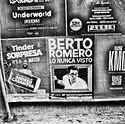pschwart
Subscriber
I took the Lana Aquarelle and tried the technique of soaking the paper in an acid. I just used a fresh batch of the 3% citric acid I use to clear the prints. It's what I have on hand. For the last two I didn't rinse them off at all. I just let them soak for about 10 minutes and hung them up to dry. The results are much better than what I got from the Lana without the acid. However, still not quite what I want. I will try the acid in sensitizer technique next. The scans of the prints lost some of the contrast, particularly the one of the cross, I didn't have time to monkey with the scan. However, they are clearly much better. The images are smoother and sharper with noticeably better blacks.
http://www.flickr.com/photos/lockhart1969/4742219182/in/set-72157624169743355/
http://www.flickr.com/photos/lockhart1969/4741592683/in/set-72157624169743355/
I have not had good luck acidifying papers with citric acid, but a 3 minute soak in 1.5% oxalic acid provides excellent results. Some papers will also print well if the acid is just brushed on (but the image color may be different if the paper is soaked). If I dry the paper with a hair dryer I can print immediately.






